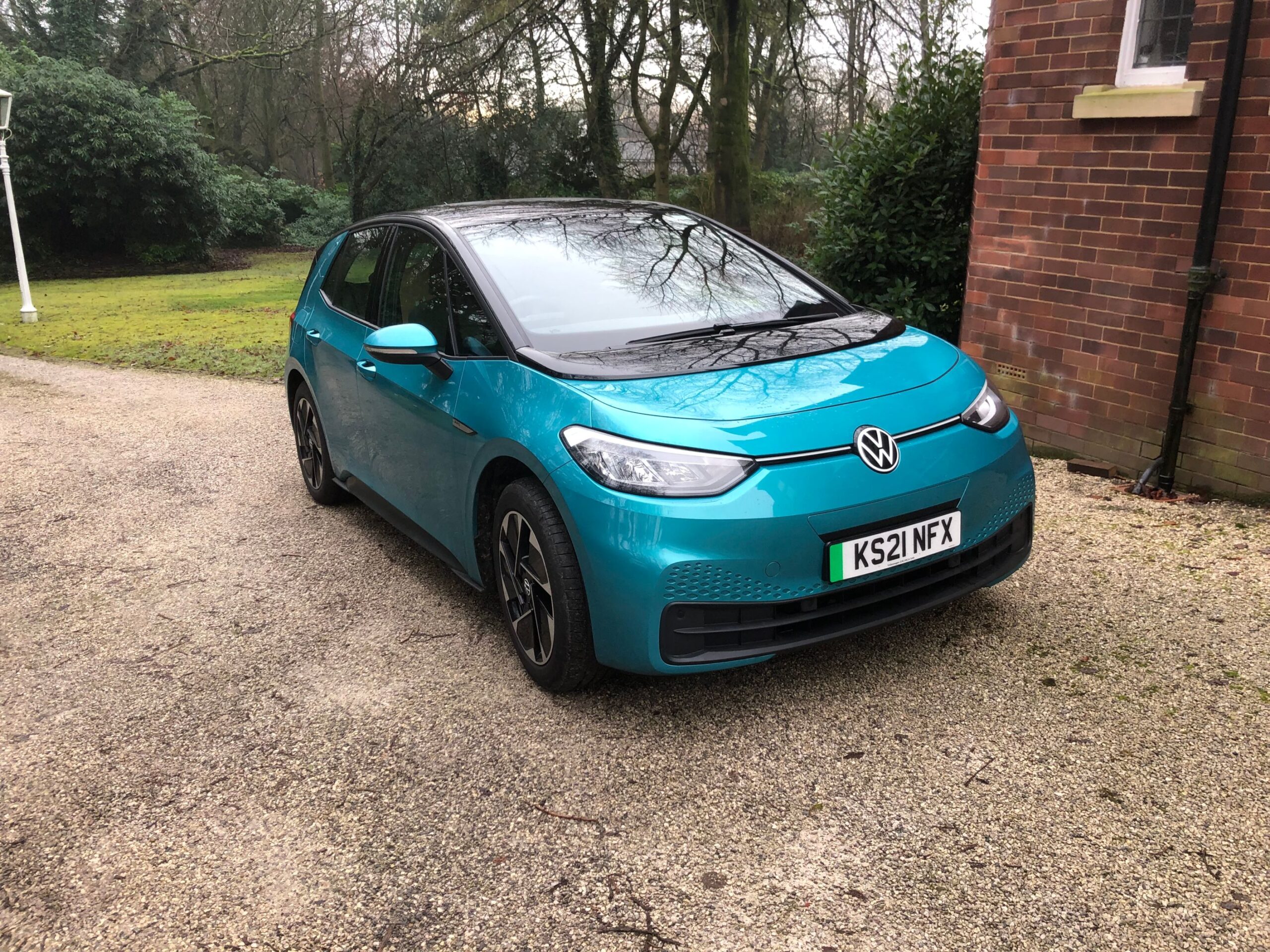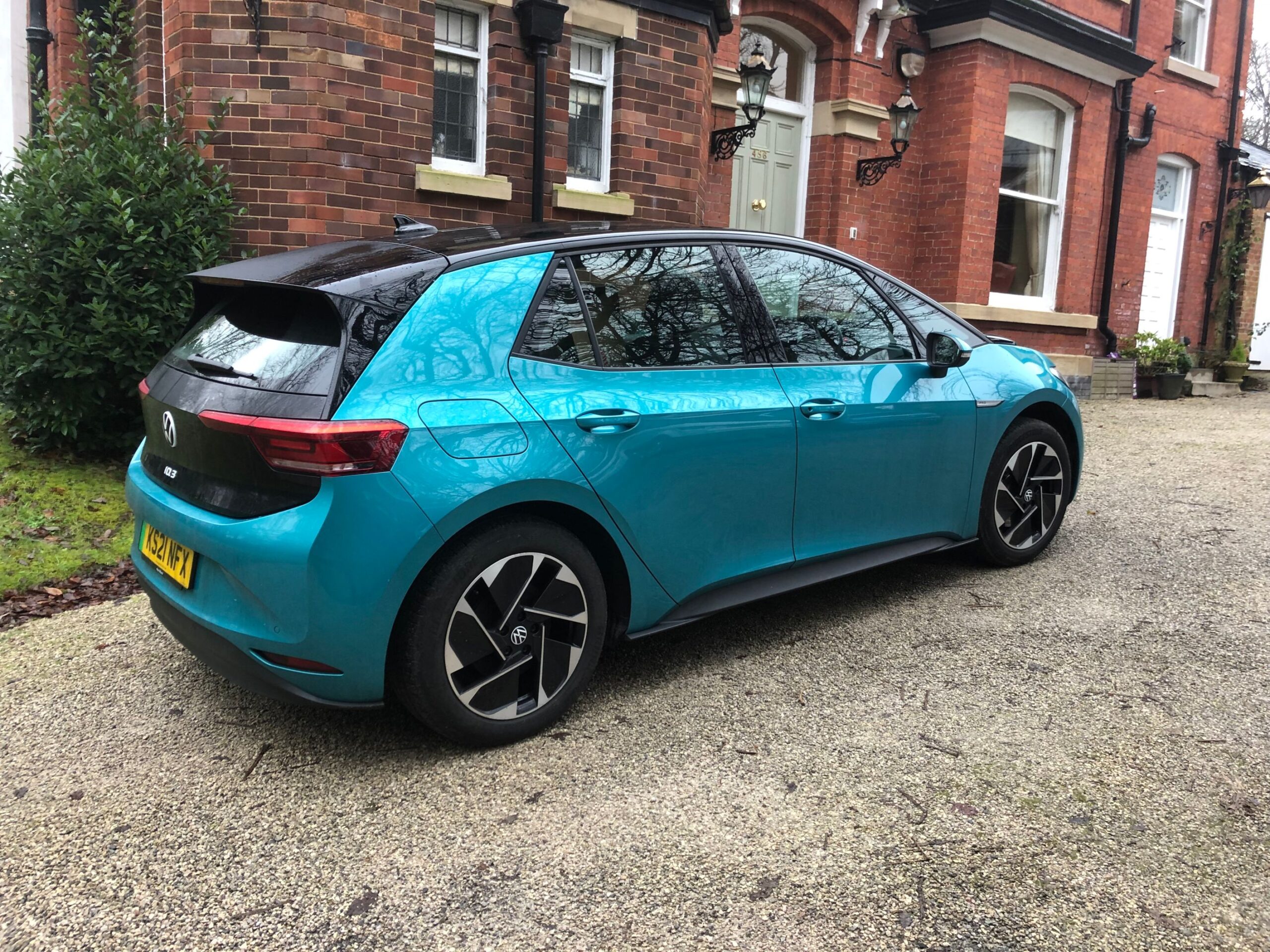

AS a self-confessed petrol-head I was not sure how I would feel about our latest test vehicle – VW’s first designed from scratch electric car the ID.3.
But I need not have worried as it proved genuinely good fun to drive with well-weighted steering and great body control plus excellent performance and, most importantly, a healthy fully-charged range.
The ID.3 replaced the e-Golf as VW’s family-sized car for those wanting to go green and comes with a choice of battery sizes, providing differing performance and range.
Like its great-grandfather the Beetle the ID.3 has its electric ‘engine’ at the back driving the rear wheels with its battery pack below the floor for a low centre of gravity giving better handling.
The entry-level Volkswagen ID.3’s battery is the Pure Performance 45kWh able to do around 217 miles on a single charge with a 148bhp motor giving 0-62mph in just 8.9 seconds.
Next up is the 58kWh battery, which is available with two power outputs. In the Pro (our test car) it’s 143bhp but if you opt for the Pro Performance it has 201bhp, meaning 0-60 in just 6.6 seconds and a better full charge range of around 225 miles.
Finally, in the larger Pro S a 77kWh battery powers the same 201bhp motor (0-62mph takes 7.9sec because it’s heavier) but it can do up to 336 miles on a charge. Our Life Pro version can, say VW, do a very useful 264 miles on a single charge.
There are five trim levels – Life, Style, Family, Max and Tour – which means, together with the different engine power options, there is a big price gap between the entry level car and top of the range model.
With an excellent turning circle and light steering the ID.3 Life Pro is great around town but also good on motorways, with a top speed of 99mph and 0 to 60 time of 9.6 seconds.
Even by electric car standards the motor and gearbox are ultra-quiet, although if you have it in re-gen mode – where more power is recovered during deceleration and braking – it can feel a bit odd at first.

Over a week of very mixed driving the ID.3 proved very easy to live with providing you plugged it in every few days to top up the range and was quick, comfortable, well equipped and roomy.
The interior tells you it is an electric car with cutting edge design while from the outside it appears fairly ‘normal’.
There’s a digital pod behind the steering wheel with a 5.3in display that shows speed, range and sat-nav instructions and a simple rotary-style drive selector on the side, forward to go forward and back to go back. In the centre is a large (10-inch) touchscreen that controls infotainment and heating – which also extends to the front seats and steering wheel.
Parking sensors (front and rear) come as standard on all models while our entry-level Life trim has no rear-view camera but did boast adaptive cruise control. All models also get LED headlights and sat-nav.
VW say the ID.3 on a fast charger can power up our mid-range 58kWh battery from 10 per cent to 80 per cent in around 30mins. Charging at home on a normal three pin socket is a much slower affair but I still managed to add around 100 miles overnight. VW say on a domestic socket it should take 9.5 hours from flat to fully charged.
So not only will the ID.3 save you money on fuel costs but also in company car tax for business users and with very low predicted depreciation strong resale values mean competitive PCP finance rates.
Our Life Pro 58 kWh model is £29,700 after the government electric car grant going up to a shade under £40k for the top of the range Tour spec car with the biggest battery pack. One tip if you do buy one – pay the extra £185 for a three pin mains charging cable unless you plan to install a fast charge socket at home.
So to sum up my first real experience of a practical all-electric car (the first one I tried a few years ago did a very impractical 14 miles on a full charge) the biggest complement is, I think, that it is very easy to forget that you are not driving an internal combustion engine vehicle!
By Motoring Editor Steve Howarth








